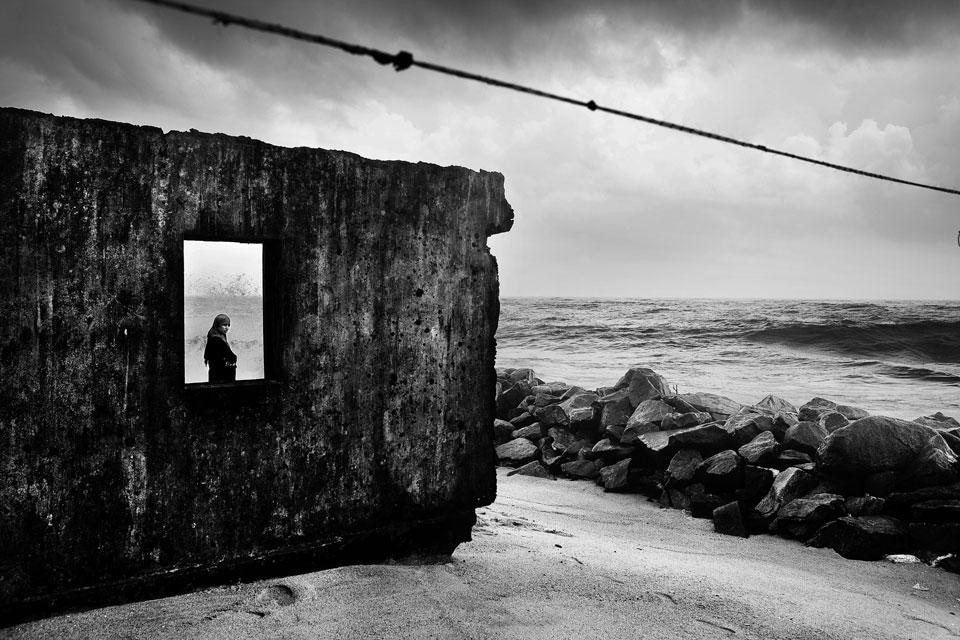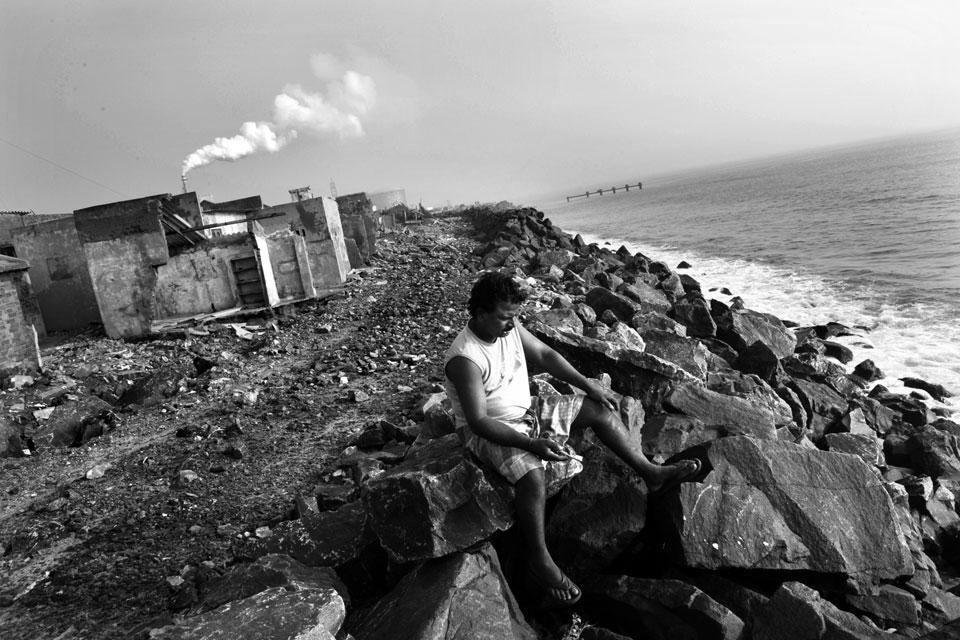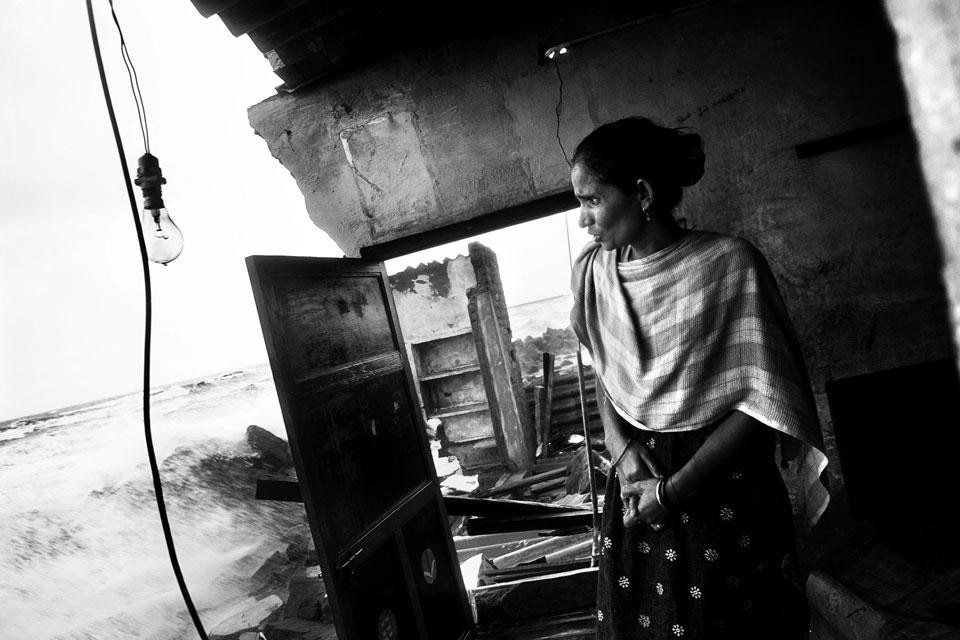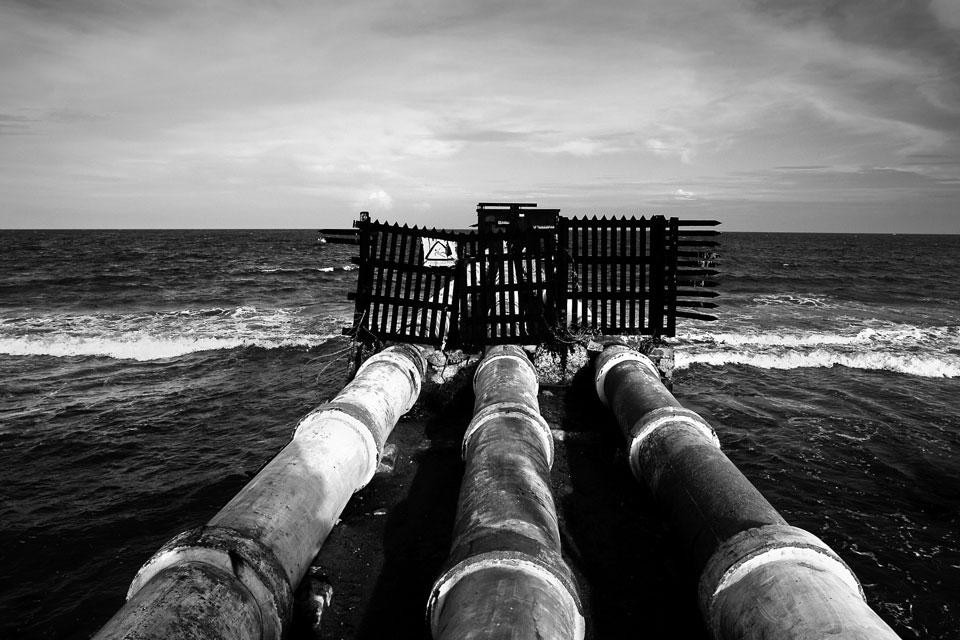Selvaprakash has started his project of documentation of this fading world in 2008. He has travelled from Chennai to Gokarna to record the multi-layered stories that the Indian coastline tells. From the protests against the establishment of a nuclear plant in Koodankulam to the devastating consequences of the cyclone Thane on 30 December 2011, Selvaprakash's photography grants care and attention to the details of a complex human and political narrative.
"It started like a story" Selvaprakash tells me. "I went to report on the conflict between Indian fishermen and Sri Lanka's Navy in the Gulf of Munnar, when the fishermen were shot by the naval police for trespassing national territorial waters. My initial interest for the human rights issues involved in the story soon turned into a deeper commitment to a long term environmental project. The shift in perspective happened after I attended a journalism course on coastal management in 2009." Francesca Recchia
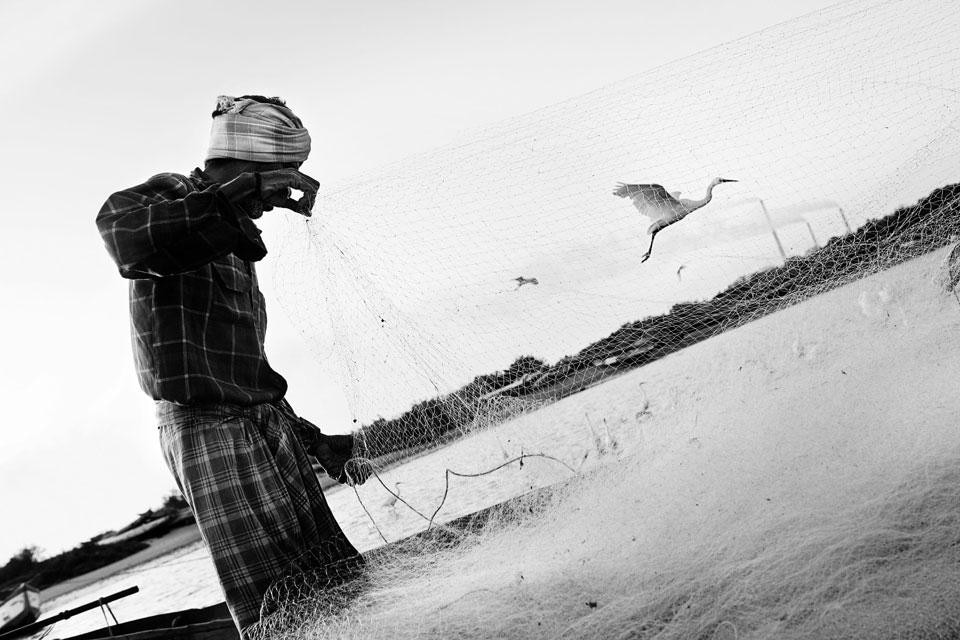
Selvaprakash: I realised that there was a very narrow understanding of the problem. The focus of the discussion would constantly be on the hardship of fishermen's life and their struggles, whereas it would be more important to consider the broader perspective and ask what are the reasons that make their lives increasingly difficult. When I started investigating, I found out that the main cause was in fact man-made: people were building a lot, power plants and harbours and ever closer to the shore. Not even the fishermen themselves connected the fact that if something happens to the environment, it will have heavy consequences on their own lives and livelihoods.
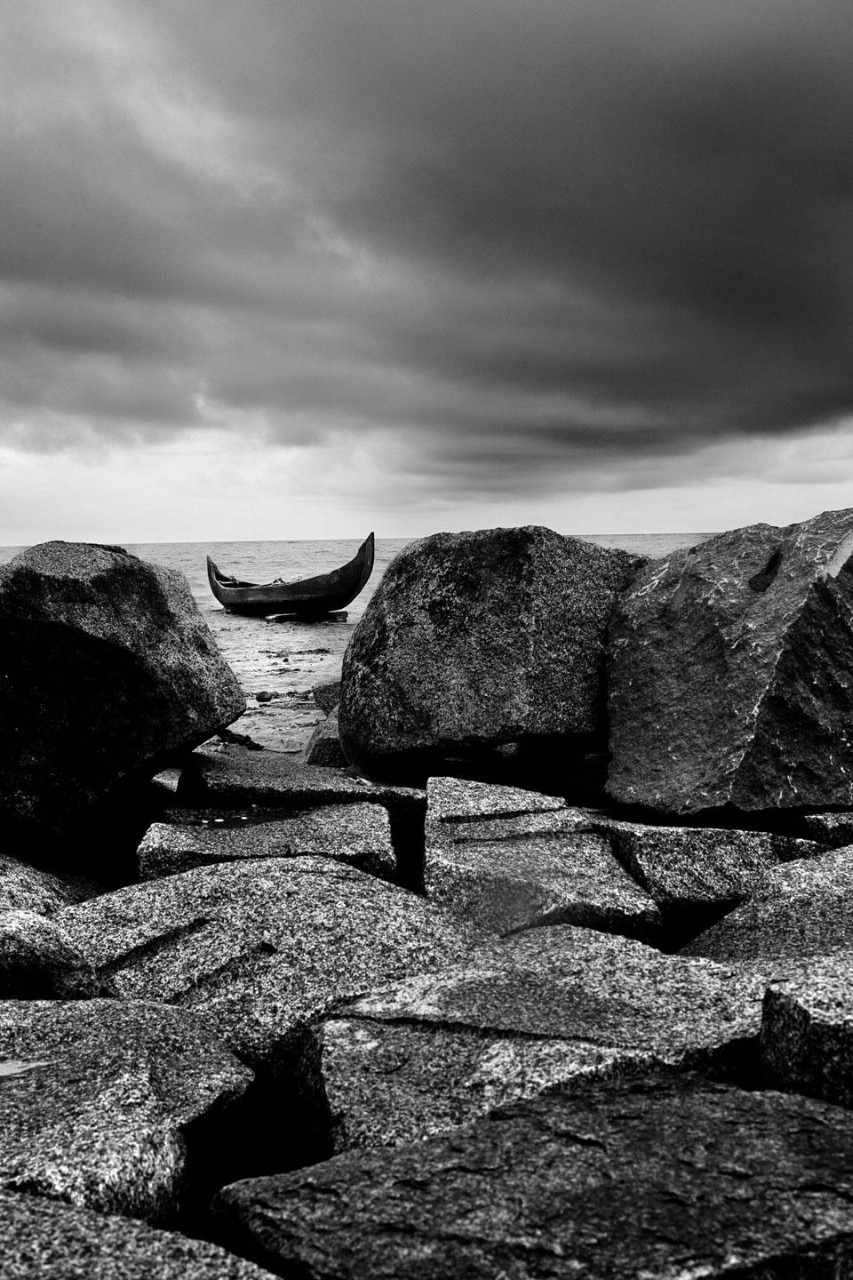
The main problem is the erosion of the coast line. The sand travels from south to north. When you build houses, power plants and harbours on the shore, you create an obstacle to this movement and so you influence the strength and size of the waves. Fishermen say that when you build on the beach, the sand accumulates on the south side of a construction while the sea erodes its northern side. The response to this phenomenon has been the multiplication of sea-walls and wave breakers, which are in fact producing the opposite effect creating more obstacles and hence more erosion.
If you open Google Earth, you see a thick black line all around the coast of India. These are the massive walls made of stones that are meant to protect it. Built directly on the shore, they are very unstable, lasting only three or four years
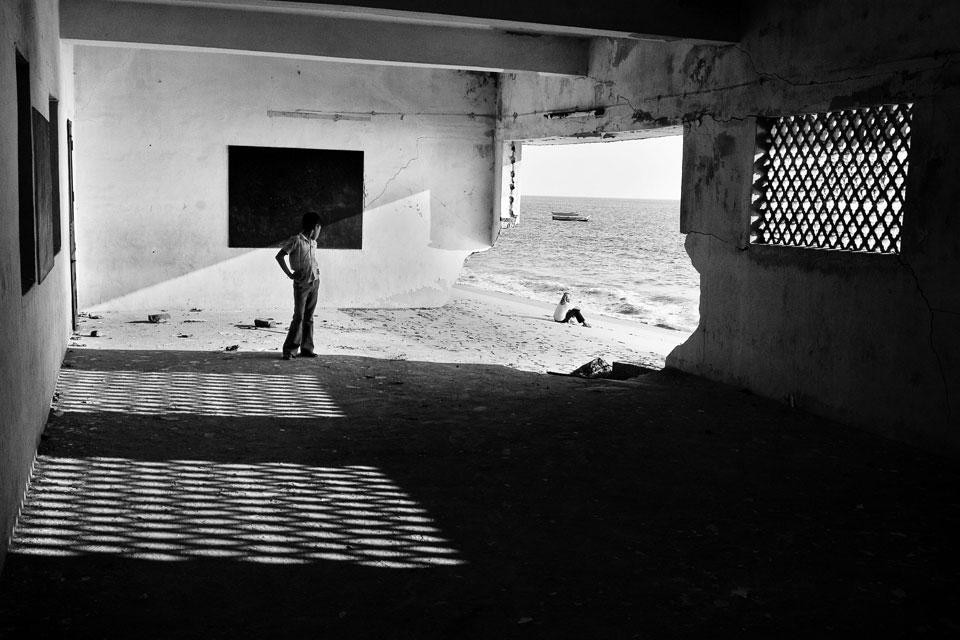
If you open Google Earth, what you see is a thick black line all around the coast of India. These are the massive walls made of stones that are meant to protect it. They are built directly on the shore, and this makes them very unstable: they last only for three or four years and then they are washed away by the regular monsoon rains or occasionally because of cyclones and tsunamis. This creates a lot of problems: when a sea wall crumble, for example, the stones are not reused, but they are just dumped in the sea. This worsen the problem they are supposed to resolve. More clogging in fact means more erosion. See the case of Ennore in Tamil Nadu or Ullal in Karnataka: they have built massive sea walls, but they are of no use and when the sea gets wild houses and schools and buildings are still being destroyed.
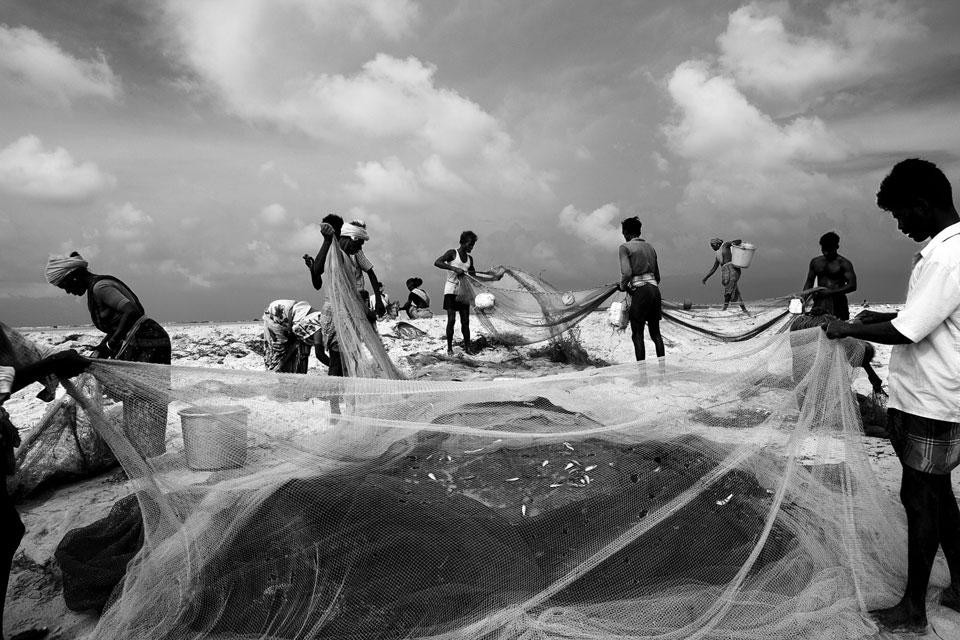
If you look at my photos what you see is the beauty of nature. That is what strikes you. But then, you soon realise that the threats and menaces are there, small, somewhere in the frame. The image is apparently simple as it the superficial, picturesque representation of nature. But when you pay closer attention, you see the signs that reveal the complexity of the story: the scars of sand mining, the fumes of a thermal plant, the unwanted consequences of industrialisation and excess of constructions.
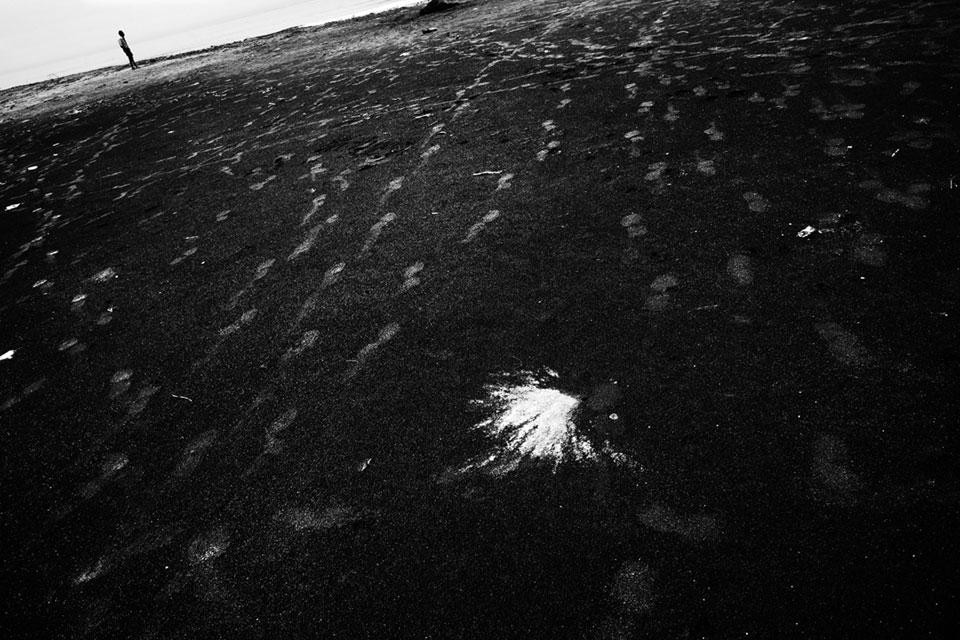
When you work on a long term project, the most difficult thing is to stay focussed and not to get lost in the details. While exploring the coasts you get fascinated by many things, the different fishing techniques, the pace of life, the incredible biodiversity. You start shooting and would like your camera to take everything in. And so you drift and accumulate more and more photos of many different things and you wonder where you are going. But then this is the beauty of a long term project, that when you have a clear agenda and you go through your material and you find yourself surprised with unexpected connections.
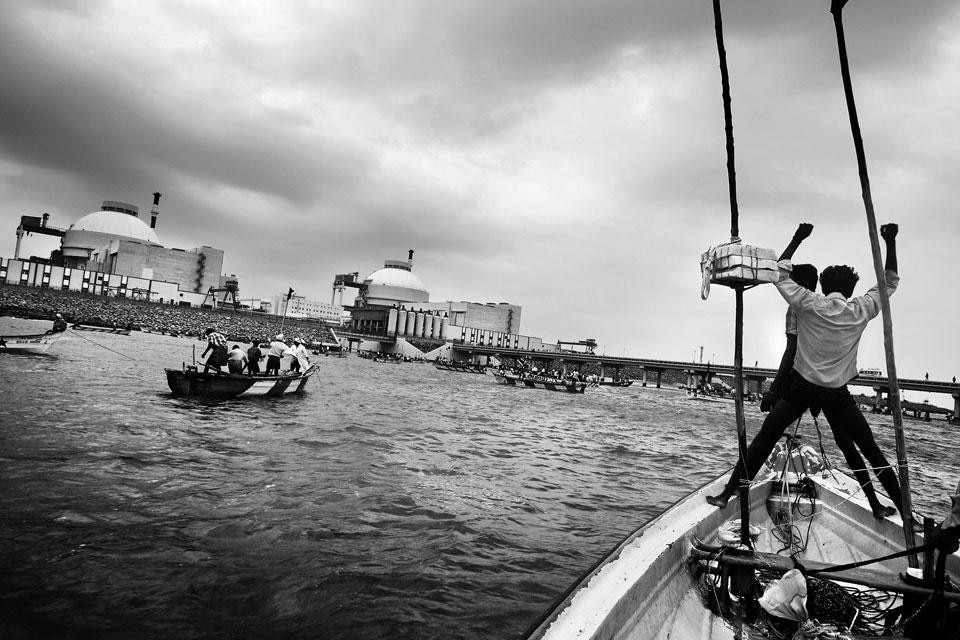
I discovered the complexity of the sea. In India we dump everything in the sea and we just think it will take it, everything: from garbage to the ashes of the dead. I was surprised by the extent to which the sea gives back to the people, for good and bad, for sustenance as much as in response to our polluting and invasive activities.
How do you see your project evolving?
I have photographed the erosion of the Indian coasts in Tamil Nadu, Kerala and Karnataka. My intention is to travel north and document the situation in the other coastal states. I would like to create an archive of the sea line in the country and possibly turn it into a book.
